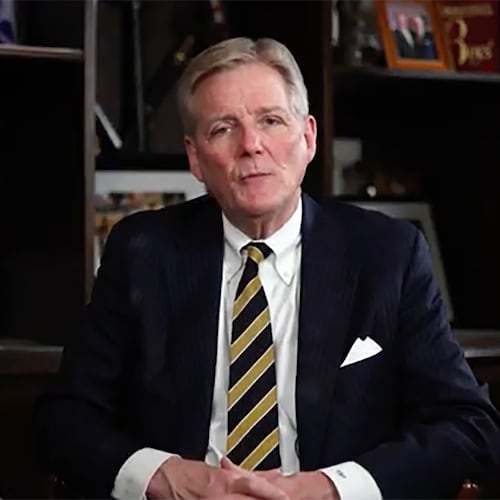It’s often called the most challenging piece of real estate in Atlanta, perhaps in the entire Southeast.
The 50-acre tangle of rail lines and parking lots commonly known as “the Gulch” is the original heart of the city, lying about 40 feet below the viaducts and surrounding streets. It took decades of effort for Atlanta leaders to find a development team willing to try to redevelop the site, located in the shadow of some of the city’s most identifiable buildings like Mercedes-Benz Stadium and CNN Center.
The resulting $5 billion Centennial Yards project, an effort led by California-based developer CIM Group, first formed in 2018 and has taken years to catch its bearings — from drafting master plans to landing the largest-ever package of taxpayer incentives in Atlanta history.
“They’ve been on a journey,” said A.J. Robinson, the president of downtown civic organization Central Atlanta Progress. “And the journey has been trying to figure out the highest and best use of 50 acres of abandoned land that nobody particularly had figured out.”
The redevelopment is beginning to take shape, with an 8-acre central entertainment district scheduled to break ground this summer. By the end of 2024, eight buildings will be under construction, with Centennial Yards slated to soon include a 5,000-seat arena, several restaurants and bars, multiple hotels and hundreds of apartments.
Credit: Gensler
Credit: Gensler
Brian McGowan, the president and CEO of Centennial Yards, said the site’s varying infrastructure and logistical issues have contributed to it languishing for so long.
“It was never built on because it’s a hard site to develop,” he said.
Here are some of the logistical challenges that Centennial Yards is trying to overcome.
Rail lines
The Gulch’s roots run deep, acting as the original industrial epicenter of Atlanta.
There are still several active freight rail lines that run across the property, and some of Centennial Yards’ new construction will include tunnels to preserve those train routes. MARTA also has tunnels that run underneath sections of the Gulch, requiring careful planning to circumvent.
Credit: Miguel Martinez
Credit: Miguel Martinez
“You can’t just drop a pillar anywhere you want,” McGowan said.
One of the project’s goals is to build a new street grid at the level of the existing viaducts, including Centennial Olympic Park Drive and Martin Luther King Jr. Drive. The new streets, McGowan said, will be completed alongside the new buildings. As part of the entertainment district, three new streets will be added to that growing grid. McGowan said that tidy road network has been tweaked in response to rail line logistics and century-old infrastructure the developer unearthed.
Credit: Centennial Yards
Credit: Centennial Yards
Ancient infrastructure
Beneath the depths of the Gulch lies some of Atlanta’s original sewer and plumbing lines. To no one’s surprise, they don’t meet current standards.
McGowan said they’ve found terra cotta pipes and sewers made of brick, all of which needed to be replaced and incorporated into new gas and electricity infrastructure. New buildings in other parts of Atlanta do not face those kind of issues, he said.
“If CIM bought a piece of property Midtown, you build a building and plug it into the outlets in the street where there’s water and power,” McGowan said. “There’s no water, no power, no gas here (in the Gulch). We have to build the outlet.”
CIM Group is the general contractor for all active and forthcoming construction, which McGowan said helps lower costs and simplifies some of the logistics of piecemeal development.
Credit: Centennial Yards
Credit: Centennial Yards
Parking rights
Most people probably know of the Gulch from when thousands flock to park and tailgate there before large events.
McGowan said the bulk of the Gulch’s parking structures will be closed to the public once ground breaks this summer. A corner of the CNN deck will also be demolished to make way for the entertainment district, but the rest has to remain standing for now.
Various parties have long-term parking rights at the CNN deck that don’t expire until 2038, which McGowan said will have to be renegotiated before the deck can be redeveloped. The Richard B. Russell Federal Building, known as Atlanta’s federal courthouse, also uses a surface parking lot within Centennial Yards and will require replacement parking as development progresses.
Antony Ressler, the Atlanta Hawks’ lead owner and a financial backer of Centennial Yards, said he’s glad the project is gaining momentum despite all the hurdles the developers have faced.
“This is a complicated project, and the more I learn about it, the more complicated I understand it to be,” he said. “I have to give (Centennial Yards) credit for staying focused and dealing with all these complicating factors.”
-Editor’s note: This story has been updated to clarify future parking changes for the Richard B. Russell Federal Building.
About the Author
Keep Reading
The Latest
Featured







